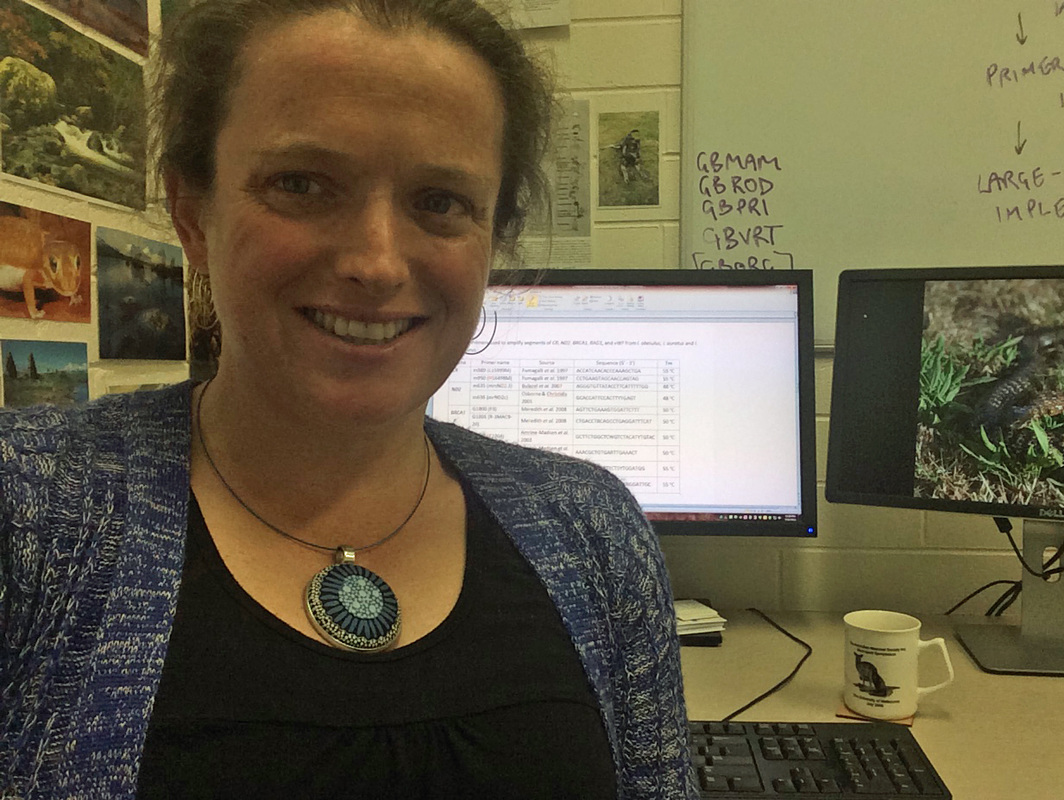Anna MacDonaldI'm a biologist with interests in genetics, conservation, ecology, invasive species, and wildlife management. Archives
May 2019
Categories
All
|
Back to Blog
WildlifeSNPits Post 19/04/2016: Earth Week 2016: Conserving biodiversity by watching your waste20/4/2016 Click here to read the full post at WildlifeSNPits
We’re celebrating Earth Week 2016 with suggestions for how to apply the phrase “Earth Day Every Day” to conserving biodiversity. There are a number of great suggestions for things you can do every day to conserve energy and water; but we asked ourselves, what actions can we take to conserve biodiversity? This week we’ll explore: food production on biodiversity, how plastic consumption impacts biodiversity, creating a biodiversity friendly lawn, and engaging children in nature experiences to foster connections to the environment. *** Today I get to have a rant about one of my bugbears, unnecessary single-use disposable junk!
1 Comment
Read More
Back to Blog
Click here to read the full post at WildlifeSNPits
Last week I had the privilege of spending two days at the 16th “Science meets Parliament”. It was an eye opening experience and I’ve learnt a lot… but let me explain… Science meets Parliament is an annual event run by Science and Technology Australia (STA), the peak body representing Australian science and technology. It includes career development opportunities related to science communication, media and policy, and the chance to spend a day at Parliament House, meeting politicians and staffers, listening to talks from political leaders and learning about how the parliamentary system works. Each member organisation of STA is able to send two representatives to the event, and this year I was fortunate to attend on behalf of the Genetics Society of AustralAsia. I’m sure I’ll miss a lot of things, but I’ll outline my highlights of the event below.
Back to Blog
Click here to read the full post at WildlifeSNPits
This week, we have a new paper published online in the journal Conservation Genetics, with former Honours student Emma Carlson as lead author. The paper is titled “How many conservation units are there for the endangered grassland earless dragons?” Yes, that’s right, dragons! But not the fire-breathing sort. The grassland earless dragon (Tympanocyrptis pinguicolla) is a feisty, but tiny, agamid lizard from south-eastern Australia. As you can see from the pictures below, they can also be incredibly cute!
Back to Blog
Click here to read the full post at WildlifeSNPits
A couple of weeks ago, Stephanie asked if there is too much I in scicomm? This week, I’m asking whether there is too much doom and gloom in scicomm – or at least in scicomm related to wildlife conservation? Two things have led me to this post. In December, Emily asked me for my thoughts on new year’s resolutions related to wildlife and nature. I don’t usually make specific new year’s resolutions, but I do enjoy the opportunity to reflect on life at this time of year. So, I’ve been considering Emily’s question. Also late last year, I read this blog post, “It’s time to bring positivity back to conservation“. Here, Billy Geary argues that: “Conservation biologists have a responsibility to communicate facts that increase the awareness of environmental problems. But that isn’t enough. As advocates for conservation it is our responsibility to deliver messages that inspire action. It’s time to return positivity and hope to conservation.” I completely agree with him. As conservation scientists, whatever our aims and motivations, at the end of the day what we are “selling” is hope. Hope that in the future our favourite species, or community, or ecosystem, will persist and thrive.
Back to Blog
Click here to read the full post at WildlifeSNPits At first they were just shadows, dark impressions glimpsed through the mist. Is that really…? Could it be…? As we moved a little closer one of them turned to the east, to face the rising sun. His profile was unmistakable, the curved horns and humped shoulders proclaiming “bison”! And not just any bison, but free-ranging European bison, grazing in the meadows on the edge of the largest remnant of primeval forest in Europe. Without a doubt, this encounter during my visit to Poland in July was the stand-out wildlife experience of my year. With an emphasis on WILD. I suspect that experience is also what prompted this post, on the topic of rewilding. Rewilding. It’s an evocative word. It’s also a word that seems to turn up quite regularly in my news feeds at the moment. Every so often, friends ask me what I think about rewilding. To answer them I wanted to gain a better understanding of some of the issues surrounding rewilding, so I thought I’d do a little reading, then write a quick blog post on the topic. Well, that was a mistake! I’ve just emerged from one of those internet black holes, following one link after another, browsing paper after news article after blog, reading about some wonderful conservation projects, outlandish ideas (some good, some… less good) and first person perspectives from all sides of the debate. So what have I learned? Well… it’s complicated.
Back to Blog
Click here to read the full post at Wildlife SNPits:
So, I just made a discovery – November 7th 2015 is (or was) the first ever World Numbat Day! I had another post planned for this weekend, coincidentally about a different group of marsupials, but how could I go past this opportunity to write about numbats? I might be a little late to the festivities, but I don’t think the good folks atProject Numbat will mind too much. In this post I’m not going to share any tales of numbats glimpsed crossing the road in front of my car, or whilst I was hiking in the Australian bush, or even any of my own numbat photographs. There’s a simple reason for this. I’ve never actually seen a numbat. Yes, I know, my credibility is ruined! But wait… before you judge this alleged mammalogist too harshly… the sad truth is that the entire global population of wild numbats alive today would likely fit in my living room. I’m not saying they’d be comfortable stacked up like that, but with fewer than 1000 individuals left it’s not a big stretch of the imagination. The species is listed by the IUCN as endangered.
Back to Blog
Click here to read the full post at WildlifeSNPits:
Today, 13th August, is Ada Lovelace Day, which celebrates the achievements of women in STEM (science, technology, engineering and mathematics) fields. Ada Lovelace was one of the first women admitted to the Royal Astronomical Society and is regarded by many to have been the first computer programmer. To mark the occasion, we thought we’d take a look at our own “typical” experiences as women in STEM, through a series of three “day in the life” posts. I’m first up, posts from Emily and Stephanie will follow over the next few days (edited 16/10/2015: you can now read Emily’s post here and Stephanie’s post here).
Back to Blog
Click here to read the full post at WildlifeSNPits:
September 7th marks the anniversary of a spectacular failure in Australian wildlife conservation. On this day in 1936, the last known thylacine, the largest marsupial carnivore and the only member of the family Thylacinidae, died in captivity in a Hobart zoo. Today, this day is recognised (I cannot bring myself to write “celebrated”) as Threatened Species Day. In July this year, the Australian Government launched a new Threatened Species Strategy at a summit in Melbourne. Many conservationists, myself included, have welcomed these plans, which include targets to improve the conservation status of 20 mammals, 20 birds and 30 priority plant species by the year 2020. Those who know me will know of my love for bandicoots, bilbies and quolls, so it should be no surprise that I’m delighted to see some of these species included in the new strategy. But still, in the days following the announcement I found myself having conversations with an assortment of friends and colleagues that went along the lines of “this is great but what about the threatened fish… or reptiles… or amphibians… or insects… or crustaceans…" If we are serious about wildlife conservation and the preservation of ecosystems, we can’t afford to focus only (or mostly) on the cute and the fluffy. We need to strive to conserve all wildlife and especially to prevent the loss of species that play important ecological roles. We need to save the pollinators, the predators, the detritivores, the ecosystem engineers… there are many of these and, although some may have fur or feathers, most of them don’t!
Back to Blog
Click here to read the full post at WildlifeSNPits:
It’s Friday, and nearly the end of the month. Think back over the last week, the last few weeks. Have you been a science grouch? I know I have. Perhaps you’ve complained about the lack of job opportunities in science? Your paper got bad reviews? Your sequencing failed? Or something else…? If I look back, honestly, I am confident that I must have had conversations almost every day this month, in real life or on Twitter, that have involved some sort of science grouchiness. |
 RSS Feed
RSS Feed








